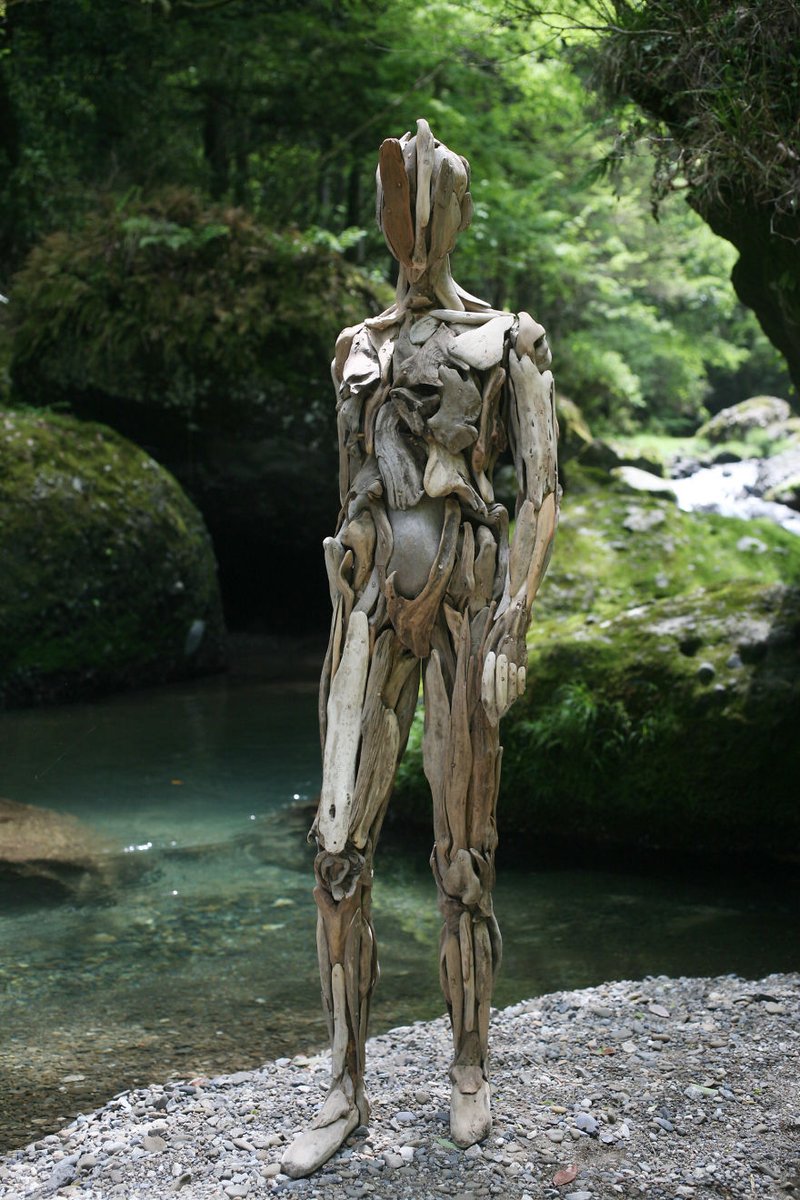All of the figures are part of an interconnected work that Iwasaki calls simply ‘Torso’ and each have undergone a painstaking process of construction over the past 25 years. 



“Gathering bits of wood from here and there, like an insect building a nest, I create sculptures” says the artist in one of his few interviews. Driftwood of just the right shape and size to mimic a human collarbone or the curve of a pelvis 

don’t come floating down the river every day. The slow, meditative process is as much a component of bringing the figures to life as their foraged bones. 

Many of the figures are ‘complete’ with alien-proportioned heads and fully fleshed out musculature, giving them an unmistakably - albeit uncanny - human presence. 

Others meanwhile are cut off at the waist or missing limbs as if dissembling of their own accord, a frightening image to come across in the woods. 

Though he has exhibited internationally the forest settings far better suit the figures than a white cube gallery, free to change colour with the natural elements, creaking and bowing with the effect of rainwater, gathering and uncovering a cloak of moss with the seasonal shift. 

#folkhorror #nagatoiwasaki #sculpture #japanesefolklore #japan #forestcreature #tree #ancientrees #driftwood #uncanny #uncannyvalley #treespirit #yokai
• • •
Missing some Tweet in this thread? You can try to
force a refresh




























